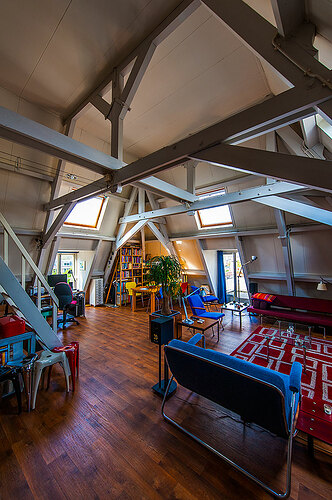I have some experience in sound transmission through structures and in fact also in my own house. I assume you are concerned with upward transmission from a lower floor to the study and bedroom above.
There are two ways in which sound will transfer from one level to another. there is the more obvious in the form of airborne sound. That requires the upper and lower spaces to be as well sealed as possible but also requires mass in the floor/ceiling. Just filling joists with glass or rock wool will not be sufficient. One way to introduce mass is to support high density boards (such a high density and thick plasterboard between the joists, several layers is better than one, some I know (not me!) have even used sand contained in plastic bags but it is heavy and may be too extreme. There is then no harm in packing the void with something like mineral wool (which is denser than glass fibre). If possible add a second layer of plasterboard to the ceiling below and hang on resilient hangers. Then add a floating floor in the rooms above and try to make sure you don’t have downlighters penetrating the ceiling. You need to check that your existing floor joists will take the additional weight without problems, though.
The second means of transmission is structure borne sound. I assume your ground floor walls extend continuously to the upper floor and so unfortunately you have a ready made route for structure borne sound which will be hard to resolve. You could try to minimise this by adding a floating floor to the ground floor, making sure the floor is not connected to the walls, in order to reduce low frequency vibration from your speakers. Alternatively (or even additionally) use a method of isolating your loudspeakers from the floor.
I recently finished a house refurbishment in which I wanted a listening room and cinema which is located above a living room. I was concerned about sound transmission in reverse to your situation, ie from above the room below. the existing floor was badly constructed and it was possible to make it bounce by just walking across it!! Not very promising for sound transmission. I went to the extent of having the entire floor removed, additional steelwork added to stiffen the floor, adding mass between the joists, a double layer ceiling and floating floor above with water based underfloor heating. The loudspeakers are placed on Wellfloats.
This method has reduced sound transmission but not eliminated it. Another problem I had was with two Perlisten 15 inch sub bass units, these are not part of the two channel audio system, just the cinema system. On certain film soundtracks the house was being subjected to very low frequency vibrations, not unlike an earthquake and I began to fear structural damage to the house. I should hasten to add that this was at even moderate listening levels. The solution was to have my dealer recalibrated the sub bass units so the bass rolls off below 20Hz instead of 16Hz. That has made a huge difference.
So has all this worked? To an extent, yes, but I am limited by the fact I have rather large hole in the floor for a spiral staircase. However, I believe it is better than if I had done nothing, but it is not perfect and I don’t believe it ever can be in a domestic situation. So, if you are realistic in your expectations I think you can improve things but you will probably not easily find a cure for complete “soundproofing”.
By the way I am not an acoustic engineer and so others more qualified than me may have better ideas, this is just an account of what I have done.
